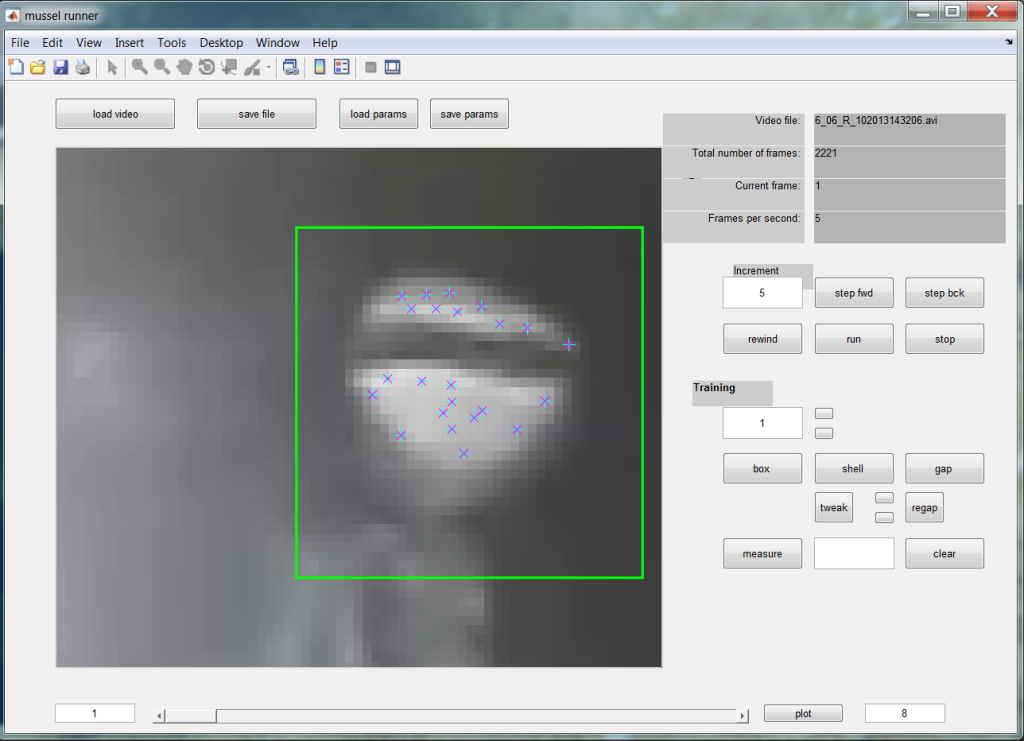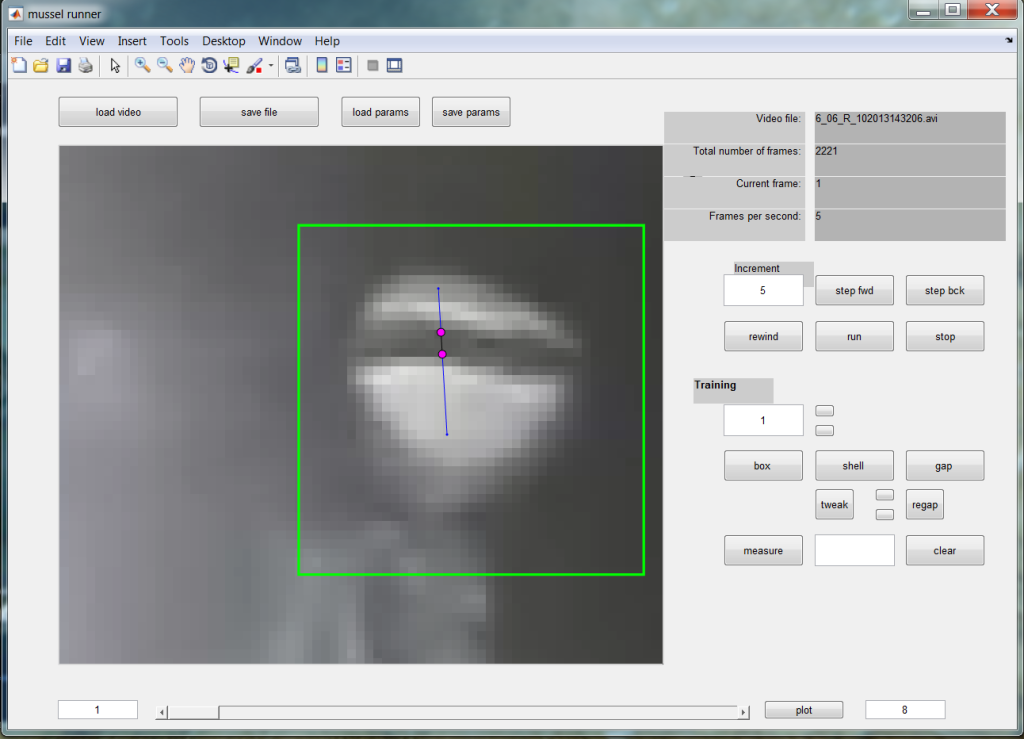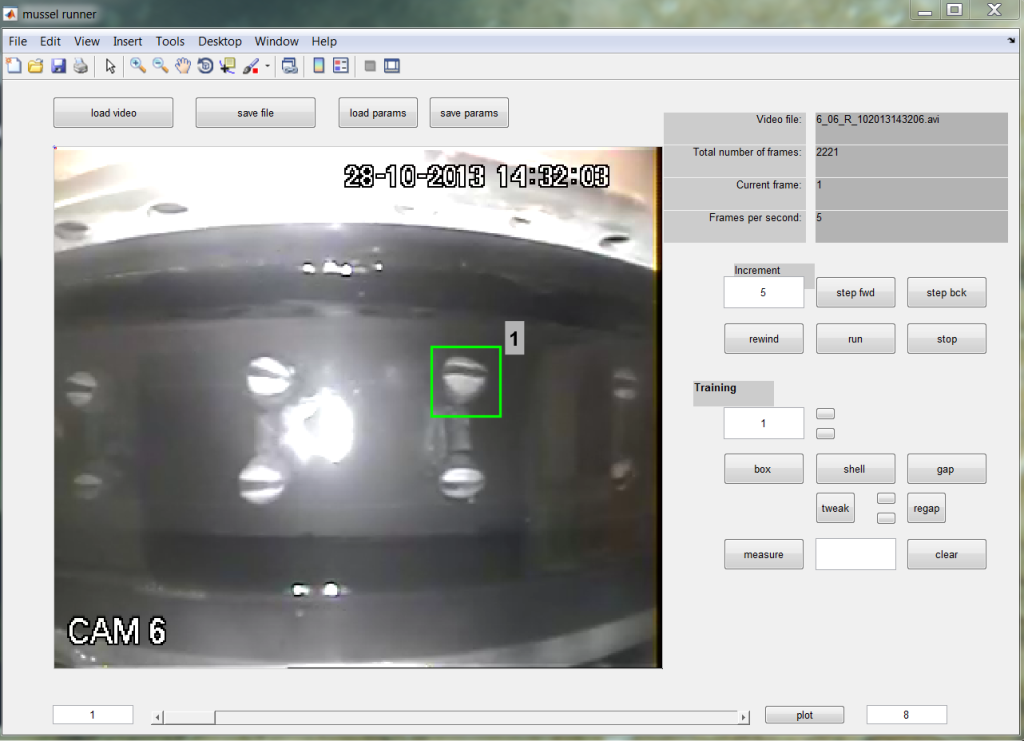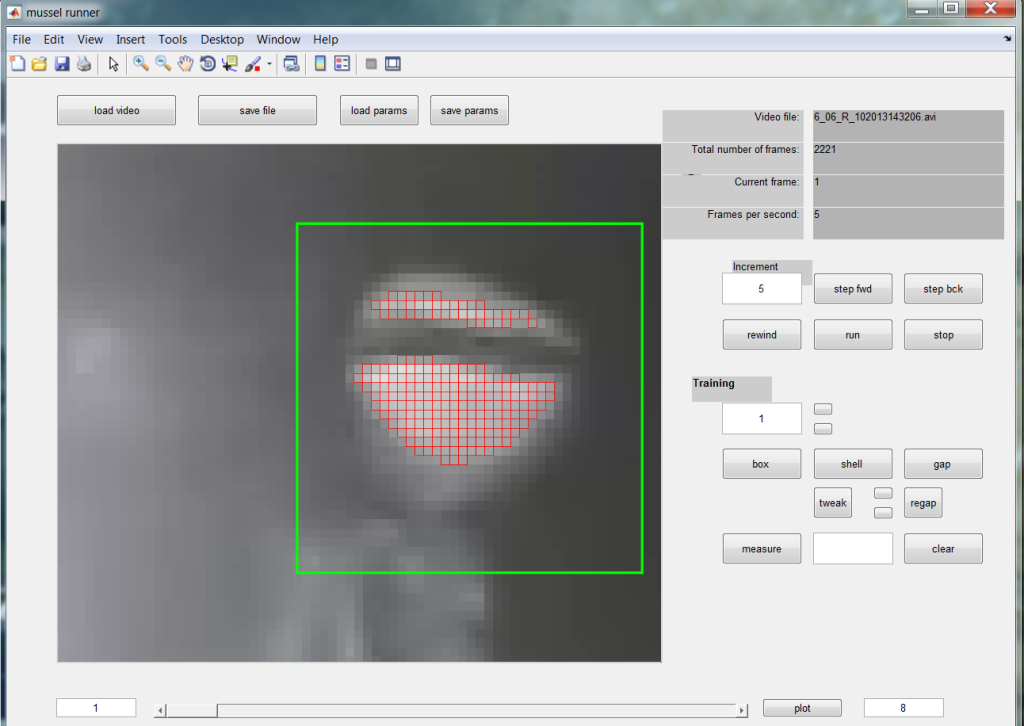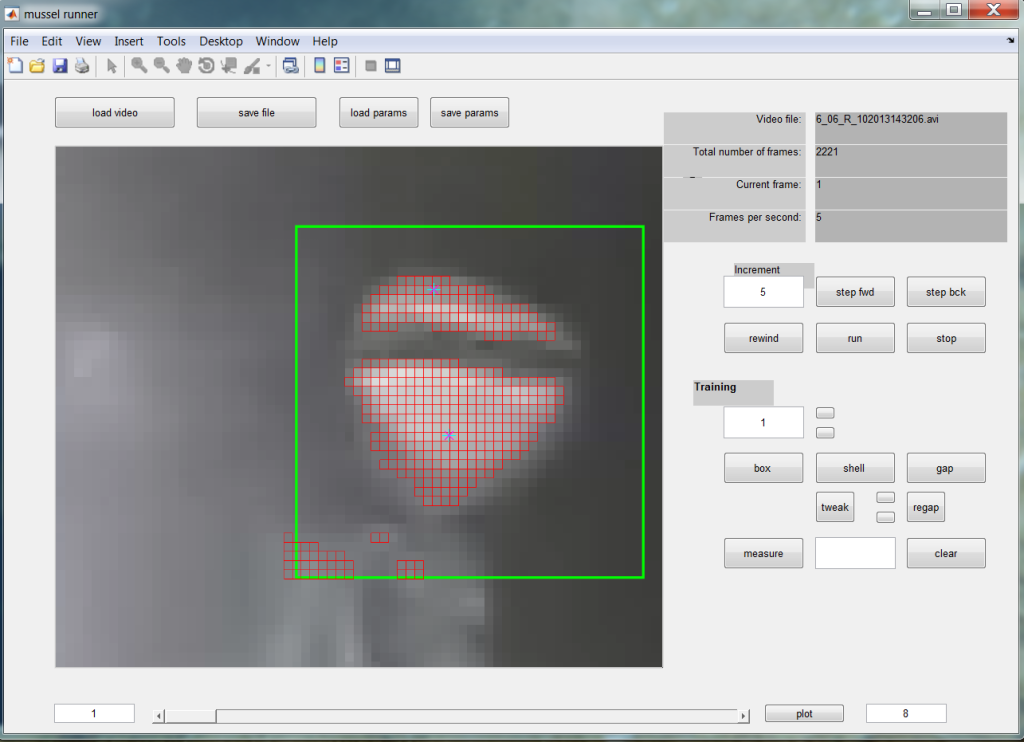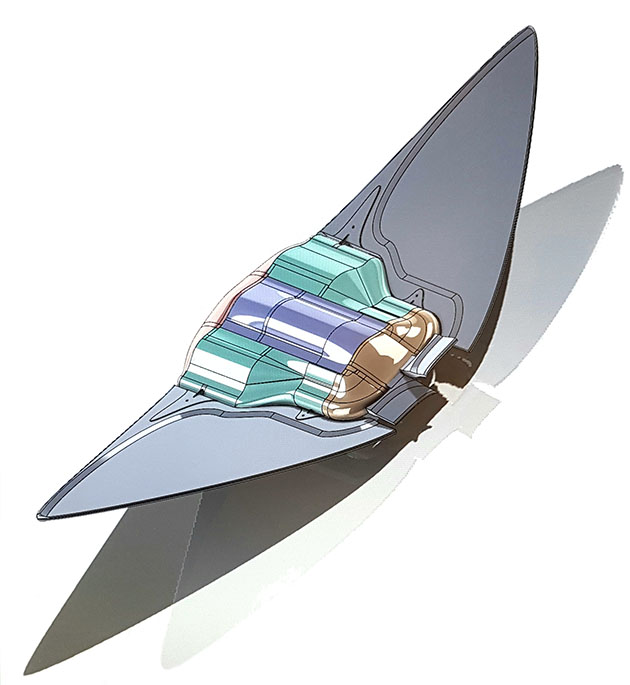Artemis – aren’t they all called that! Here I developed a simple method to machine classify the behavioural state of a load of mussels. Basically the experiment consisted of exposing groups of 8 mussels to a varying concentration of pollutants to see when they reacted (by closing their shells). This helps in the definition of the minimum acceptable levels of various pollutants put into the water by power stations and similar. Open shells means they are feeding (which is important for their survival, but that they are perhaps also being poisoned). The mussels were kept in the dark, as this is when they do most of their filter feeding, so each block of 8 mussels were filmed in infra-red light. Then somebody needs to watch the videos and record what each mussel did, and when – this turns out to be a massive challenge when the videos are nine hours long. Even with a well motivated and conscientious student looking at the screen, it can be a very difficult job to visually monitor all eight mussels and record their changes.
So I made a simple machine learning system to watch the video and automatically record the changes. It was based on contrast differences. The mussels were painted white, and the gap between their two half shells could be identified and measured.
The benefits over a human operator were 1) it was objective, 2) small deviations in gape could be continually recorded, and 3) it was reproducible across treatments and to any other similar experiments. It could be tested, calibrated and verified over short test sequences. It was a great success and proved the benefits of minimum complexity for machine learning.
